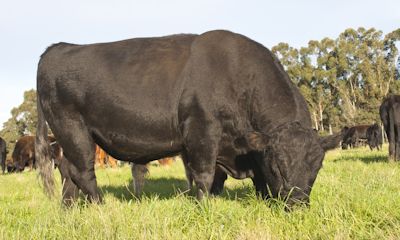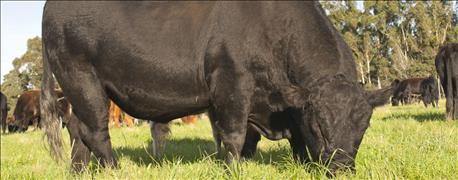
It's breeding season, so it's important to keep a close watch over the bull herd. You can't overestimate the importance of the bull herd, says Thedford rancher, Dave Hamilton.
"It is extremely important to profitability to select quality breeding stock that are sound footed and have the mobility and stamina to stand up under rugged conditions such as July temperatures and a rapidly cycling cow herd," he says.
"The herd bull battery represents 90% of your genetics in your cow herd with the progeny they leave annually and the replacement heifers you retain in your herd over that bull's usable life span, which is typically about five years," says Hamilton.

SELECT QUALITY STOCK: "It is extremely important to profitability to select quality breeding stock that are sound footed and have the mobility and stamina to stand up under rugged conditions such as July temperatures and a rapidly cycling cow herd," says Thedford rancher, Dave Hamilton.
Related: Order a bull soundness exam before breeding season
Hamilton and his wife, Loretta, represent the fourth generation operating their 115-year-old family ranch along with his Hamilton's father, Reed. Breeding season on the Hamilton Ranch is a little later than many producers, beginning on June 25 for yearling heifers and July 5 for the balance of the cow herd.
During breeding season, it isn't that uncommon for there to be some fatigue and lameness issues with active bulls. "To overcome these challenges, it is important to purchase bulls from reputable suppliers who stand behind the bulls and guarantee the bulls should any major issues become unresolved with treatment or rest," Hamilton says.
"Some lameness occurs as a result of heavy activity because our cows cycle rapidly and 85% of the cows are bred in the first cycle," he says. "So, fatigue and some lameness require us to rotate some of the bulls out of the breeding pasture for a week to 10 days and then turn them back in to finish up the 60-day breeding season."
~~~PAGE_BREAK_HERE~~~
Because of a shorter breeding season and a high percentage of cows cycling in the first 21 days, Hamilton carries 15-20% more bulls just to ensure that a fresh battery of bulls is on hand to cover the cows.
"Rapid breed back assures a more uniform and marketable calf crop," says Hamilton.
"Our bulls are running in larger pastures all winter, so exercise is not an issue," he says. "They are in a body condition of 5 or 6 and seldom get overly fat. With the later breeding season, the bulls have 45-50 days of green grass to flesh up, and be ready for an active breeding season."
Related: 4 tips for bull buying during the 'good times'
Hamilton's bulls are winter grazed on native Sandhills range, just like the cow herd, and they receive supplemental protein from alfalfa hay, as well as salt and mineral.
"The yearlings are wintered separately from the mature bulls and are supplemented with a little more protein and grass hay, but they are also expected to range on native pasture for part of their ration," he says.
"I routinely do a breeding soundness exam on all bulls in late May, including the newly purchased yearling bulls which have already been checked once by the purebred breeder that I purchased them from," Hamilton explains. "I feel it is cheap insurance to know of problems with any bulls that may be a result of frost damage to testicles, soft testicles, semen abnormalities, feet and leg problems, failure to extend and other soundness issues that can occur."
You can learn more about how Hamilton manages his bull herd health by contacting him at [email protected], and by reading a related print article in an upcoming issue of Nebraska Farmer.
About the Author(s)
You May Also Like






